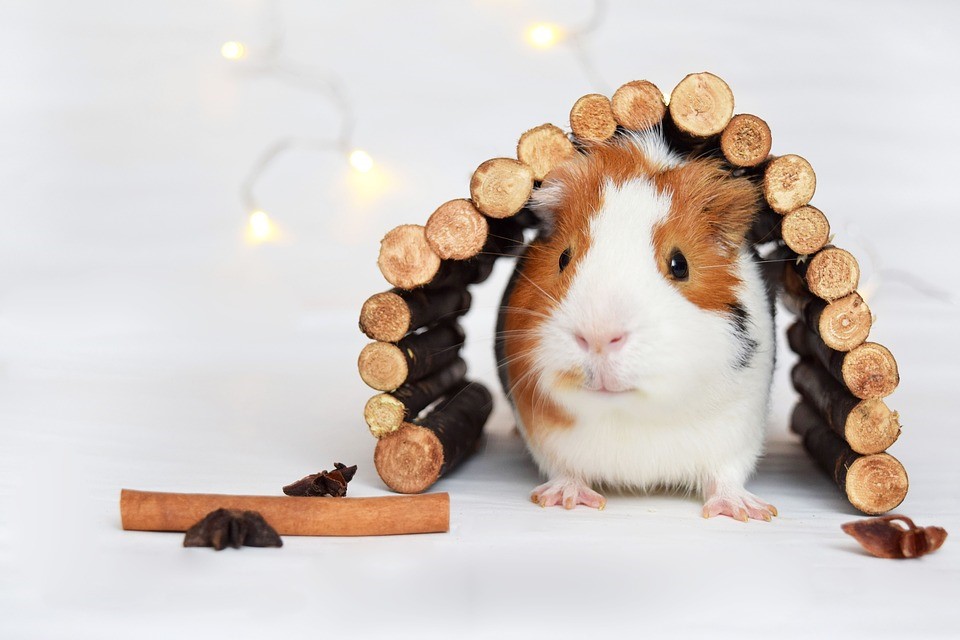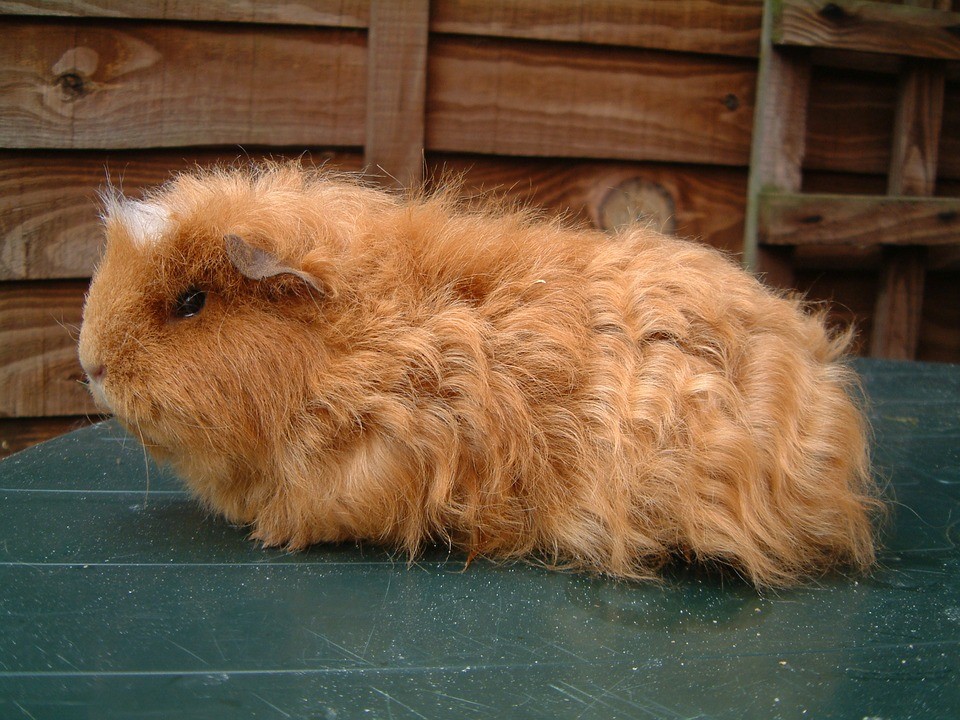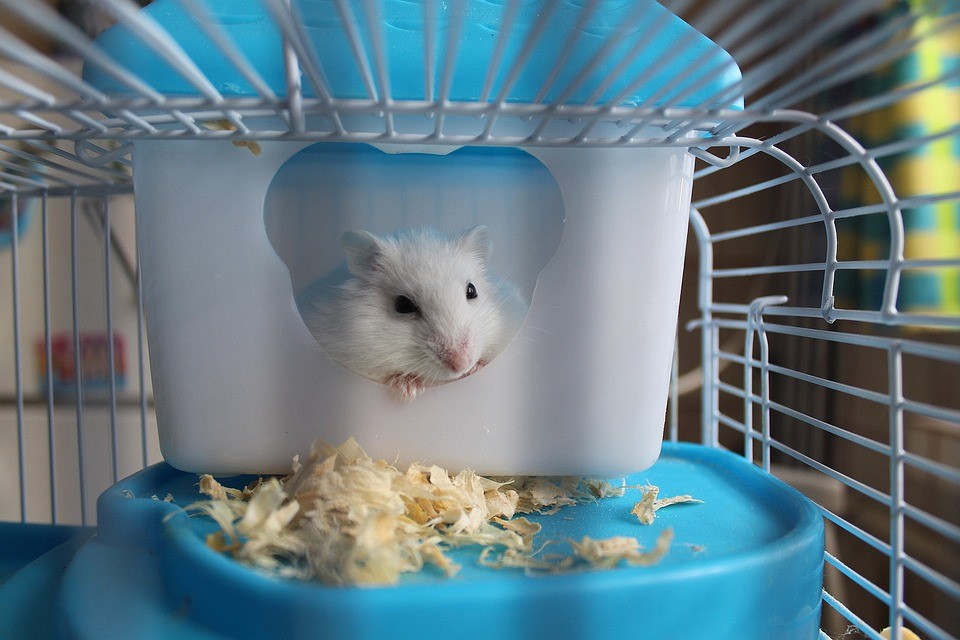The Most Famous Guinea Pig Breeds
Guinea pigs are a species of rodents but are awesome to watch and interact with them. They used to be in the wild but humans domesticated them, and there are currently almost no guinea pigs in the wild. They are mostly kept by people as pets, for laboratory experiment, and for modeling shows. Whichever the case, there are some vital pieces of information you need to know about guinea pigs like the guinea pig breeds so that you can choose the one you want to rear.
The guinea pig life span is approximately five years but some live up to ten years. In fact, the longest living guinea pig according to Guinness book of records had lived 14 years and 10 month. A mature female guinea pig weighs approximately 800 grams and a male 1000 grams. However, these numbers vary a lot depending on the guinea pig breeds under review. The most important point is to know on average how long do guinea pigs live for proper planning.
Guinea pigs are considered rodents and relatives of rats and mice. They come from Peru in the Andes Mountains. The name the Peruvian Indians gave them is cavy. They do make noises such as oinks, whistles, snorts, and honks. It is believed this is why they are called pigs. Cavies can become as tame as rabbits if handled frequently. Guinea pigs can be potty-trained. In addition, they will be affectionate and seek you out if you are kind to them. Guinea pigs can be purchased at your local pet store either as a baby or adult. Your best bet is to purchase a young cavy and pick the calmest one you can find. They will scamper away when you try to pick up a baby but one that squeals and kicks when you pick it up may have a bad temperament. A well-socialized cavy will purr when scratched behind the ears. Make sure to examine the body of each cavy you pick up. It should feel solid and heavy not skinny and light. If it is a smooth coat it should be glossy and whatever the variety, should have thick fur. Look at the eyes to make sure they are not runny and the rear end for signs of diarrhea.
Guinea Pig Diet
The primary element of a guinea pig’s diet should be grass hay (Timothy, Orchard, Bluegrass, Oat Hay). This wears down the teeth and keeps the digestive system working properly. Pellets are really just a side dish.
They should be left in a bowl for him to nibble all day. Don’t be fooled by pet shops telling you rabbit pellets are fine for cavies. This is not so. Insist on guinea pig pellets. You can feed your guinea pig fresh vegetables, cabbage, apples, spinach, corn, cauliflower, beets, lettuce, bark, seaweed, grass, hay, and leaves. Give only small amounts at a time of fresh foods so your cavy doesn’t get diarrhea.
The pellet food is important because it helps to keep the teeth short. In nature the cavy chews on twigs for this and you may find you need to give him twigs if the pellet food doesn’t completely do the trick. Water should be given through a water bottle, which will prevent the pellets from becoming mushy.
The most common problem with guinea pigs is vitamin deficiency. They are vulnerable to getting scurvy caused by too little vitamin C. The first symptom you’ll see is thinning hair along the center of the back (this may also be caused by mites. Consult your vet). The best way to ensure ample Vitamin C is to give a cup full of Vitamin C-rich veggies per day, like cilantro, red bell peppers, oranges, and dandelion greens.
10 fast facts about guinea pigs:
1. These are not types of pigs, and they didn’t originate from Guinea
2. A guinea pig can also be called a cavy which is the shortened form of Cavia Porcellus, a male one is called boar and the female one is a sow
3. Their teeth are constantly growing and thus they can be active chewers of almost anything around them
4. They are highly vocal and communicate through squealing, chirping, rumbling, purring, and wheeking
5. They mainly feed on vegetables, hay, and pellets
6. The average lifespan of a guinea pig is about 5 years
7. Best guinea pig cages are expensive but very comfortable
8. They are highly social and a lonely guinea pig is at risk of dying within two years
9. Contrary to many rodents, guinea pigs are born with fur, open eyes, and teeth. They also start eating within two days and a young one can run when only 3 hours old
10. They pass two types of poops, the soft and the hard one. They eat the hard one since it comes out while not fully digested
What distinguishes guinea pig breeds?
There are various breeds of guinea pigs available for rearing as pets, for shows, or scientific research. The purpose of rearing the cavy is the major determinant factor in the breed selection. For example, the long-haired breeds are best for shows and not the best as pets because they require extra care to keep them clean. The fur can also give them stroke due to excess heating. As such, regular trimming of the fur might be required.
Different guinea pig habitats is also believed to have led to the differentiation of the breeds. The hairless breeds are adapted for living in hot areas while the long-haired ones are adapted to live in cold areas. However, since the rearing of the cavies is largely dependent on taste and preference, you will find these two different breeds in an area with the same climate. The owners will trim the long hair in summer and keep the hairless ones warm in cold seasons.
Other distinguishing attributes:
• Color is also another attribute that you can use to distinguish one breed from the other.
• Distance of the hairs
• Texture and extent of curling on the coat
• Presence or absence of swirls, cowlicks, and other coat textures.
Major classifications of guinea pig breeds
The guinea pig breeds can be classified into four major groups:
A). The long-haired guinea pigs:
These are guinea pig breeds that have long hair on their skin and require regular grooming and trimming unless you are keen on maintaining the cleanliness of the hair. These are among the best breeds for shows because their coats can be quite appealing when well kept. The main breeds in this category are:
1. Silkie guinea pig: The silkie name is related to the texture of its hair. Just like the Peruvian guinea pig, the silkie guinea pig has long hair that falls backward without covering its eyes. This is the major distinctive feature from the Peruvian guinea pig. Although it is a good breed for pet, it is mostly kept for show competitions. It’s the most gentle guinea pig breed but a bit shy. It may take some time to get used to new environments.
2. Peruvian guinea pig: This is one of the most unique breeds of cavies. It can portray features as those of the silkie guinea pig but a thorough analysis will reveal the following differences. The Peruvian guinea pig fur parts at the spine and drops downwards, if not controlled the hairs can cover even the eyes. Another distinctive feature is the length of its hair; it can grow up to 20 inches and 7 inches under the belly. They also have two rosettes.
3. Texel guinea pig: This is a cross breed between a silkie guinea pig and a rex guinea pig. Its main distinctive feature is the curly hair and the big head. Their bodies are shorter than those of the most other guinea pig breeds. It’s not the best breed for children or first-timers because it requires extensive care especially on the part of hair grooming.
B). The short haired guinea pigs:
Just as the name suggests, their hair is short and does not grow fast. There is no need to trim or groom it often since the fur drops on its own. The main breeds in this group are:
1. Rex guinea pig: This is a short haired guinea pig that is easy to keep and makes a good pet for the children. This guinea pig lifespan is about six years. Its main distinctive feature is the longer ears than the rest of the guinea pig breeds.
2. Teddy guinea pig: This type of breed can be confused with the common American breed but they have distinctive features. For example, they have a wider, curvier nose that is up-turned. Their coat is wiry and rough. As opposed to the long haired breeds like the silkie guinea pig, their fur requires very little maintenance. This makes it a good choice as a pet. It is also friendly to children and adjusts well to new environments.
3. Himalayan Guinea pig: This type of cavy is mostly found in North America and is kept mainly as pet. Contrary to the name, it never originated from Asia but rather in Europe. They are easily distinguishable from other guinea pig breeds since they are albinos or white. They only develop pigments on the nose, ear and the feet.
The two main breeds of Himalayan guinea pig are the chocolate and black Himalayans guinea pig. In line with their names, the black one has black pigment on its feet while the chocolate one has dark pink to chocolate pads. Every Himalayan guinea pig is born white with red eyes and the pigments start developing after some months.
C). The skinny pig – shaved guinea pig: This belongs to a category of cavies that do not have hair on their skin. They are adapted for high-temperature regions as they tend to eat a lot if exposed to coldness and there is also a risk of hypothermia. Since this category does not have many breeds, we can mention that another skinny guinea pig breed is the Baldwin.
D). Cuys: These are the guinea pig breeds that are kept for meat or as a source of food especially in Peru. However, even the pet lovers keep them too. The breed is a little shy and not friendly. They can grow up to 4kgs in weight and 11 inches long. Since they are maximized for food, this type of guinea pig lifespan is lower than that of the rest of the breeds. The main breed in this category is the Cobayo.
Best Guinea Pig Cages:
Guinea pigs can live in hutches just like rabbits. Guinea pigs should not be kept on a wire-bottom hutch. They have tender hairless feet that can be easily injured. Bweare of a condition called Bumblefoot, a severe infection of the foot caused by wire cages. Cages may be purchased at a pet store or made from wood and chicken wire.
Usually a 2-foot by 3-foot cage is adequate. Newspapers spread on the floor of the cage will catch droppings and urine. The cavy leaves much urine so is prepared to clean the cage often. Cavies like to have a perch in their cage and a good idea is to use a small cardboard box so he can crawl onto it.
You can also cut a door so he can crawl into his little house. You can keep the hutch outside but make sure to protect it from wind, rain, and sun. He should be brought in during the coldest weather. They love to be let out of their cage but if you do so outside make sure you can see him at all times.
Homemade Vs. Store-Bought Cages
There are many ways of housing your guinea pig, but the most common options are homemade cages vs. the store cages. The U.S.D.A. prohibits keeping cavies in a free-range method unless the area has been inspected and approved by a certified vet. However, even were it not for the regulations, keeping your cavies out exposes them to unlimited risks. They can be preyed on by the other animals, risk of getting diseases is high, they become hostile, and in the worst case, they can even disappear.
A guinea pig habitat should be as natural as possible. For easy bedding option use hay but not pine wood chippings. Also, because its instincts are generally wild, they will feel more comfortable if you provide hiding places. These need not be complicated facilities but rather even big pipes are ideal as long as the cavy can turn inside. When frightened, a cavy feels better if it hides rather than staring at the threat. A hiding place can be even a small wall where the cavy can run behind it to hide.
If you decide to get a cage from the stores, it is worth looking for the best guinea pig cages. These should be big and allow free air circulation. There are many brands of these best guinea pig cages, and your choice might depend on your taste. However, to get you started, you can look at these best cages to keep your guinea pig safe and comfortable,
• Guinea pig cage and habitat by Midwest: The cage adheres to the minimum requirement of each guinea pig habitat of 8 square feet. The top is foldable and is an ideal cage for first timers.
• Living world deluxe habitat: This is the real habitat; it provides all the essential features needed for your guinea pig. For example the feeding area, a hiding place as well as a resting place.
• Midwest critter nation double unit with stand: The cage is a bit expensive but very expansive. It is no secret that your cavy will feel appreciated as it can climb, hide, rest on raised areas and the cage has also mobility since it has wheels.
• Home sweet home sun seed guinea pig cage: It’s a good cage because it can serve as indoor house and still be used outside. The plastic base can be removed with ease and the top is easily removable.
Which is the best guinea pig breed?
The objectives of rearing the guinea pigs vary from one person to the other. As such, don’t keep a particular guinea pig because your friend has one, maybe, the color of that guinea pig made him or her like it. However, unaware to you, that particular breed might require grooming almost every day, for example, the Texel guinea pig. The best guinea pig is the one that meets your objectives, whether you want a pet or one for a show. The colors also vary and we believe you will do your due diligence research before buying the cavy.
References:
Inside the Life of a Teen and Her Guinea Pig | Healthy Pets, Healthy People | CDC. (2018). Retrieved from https://www.cdc.gov/healthypets/animal-tales/teen-and-guinea-pig.html
British Cavy Council – Specialist Breed Clubs. (2018). Retrieved from http://www.britishcavycouncil.org.uk/Breeds/
Animals, A. (2018). Guinea Pigs – Facts, Breeds, Information & Pictures. Retrieved from https://animalcorner.co.uk/animals/guinea-pigs/
Animals, A. (2018). Guinea Pigs – Facts, Breeds, Information & Pictures. Retrieved from https://animalcorner.co.uk/animals/guinea-pigs/
Guinea Pig Breeds: Hair Types and Colors. (2018). Retrieved from https://www.animalwised.com/guinea-pig-breeds-hair-types-and-colors-553.html